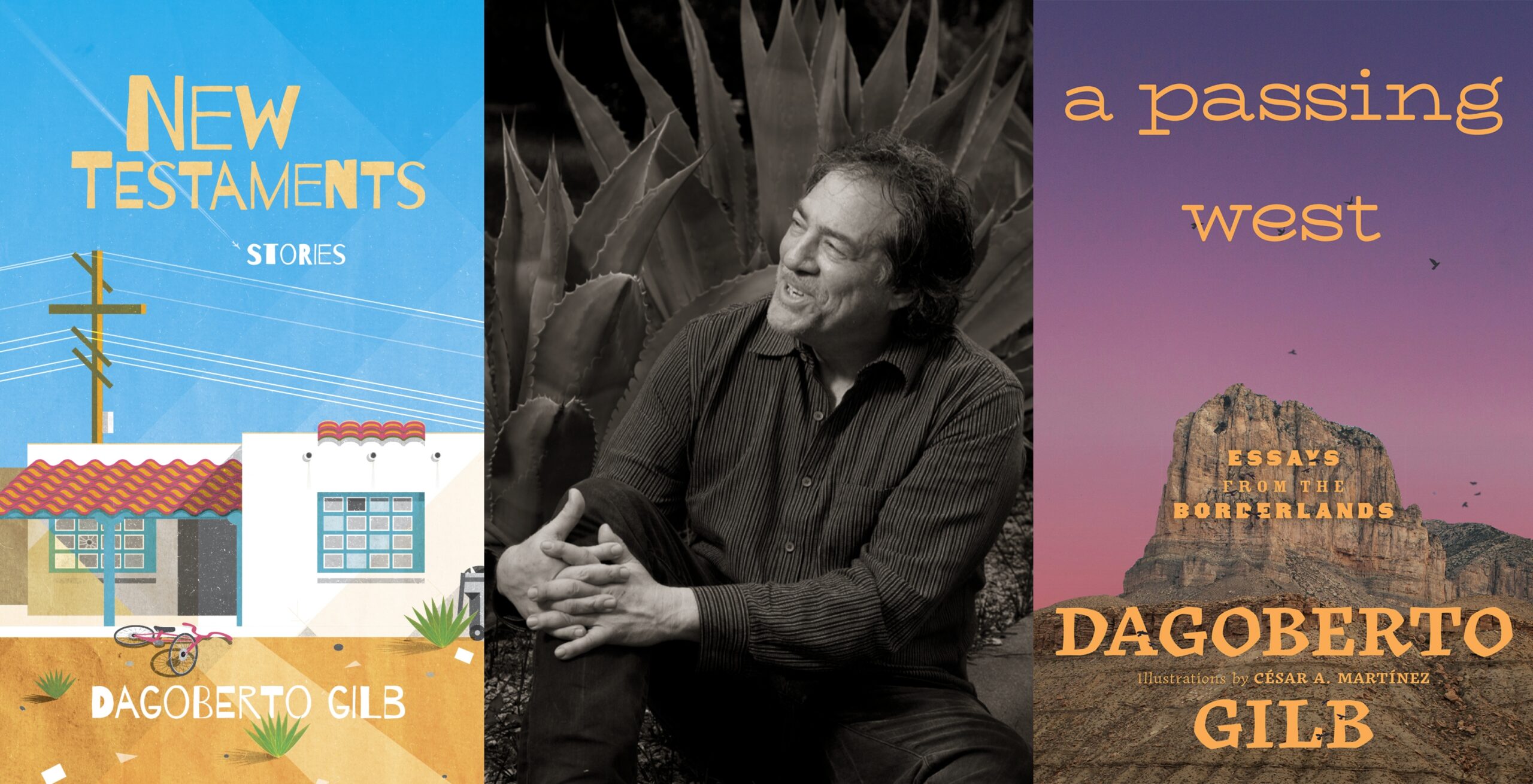The Kindness of Strangers
After the success of The Glass Menagerie, Thomas Lanier Williams, later known as Tennessee, spent time in Mexico in late 1945. “I feel I was born in Mexico in another life,” he wrote in a letter from Mexico City. Over the years, other writers—from Katherine Anne Porter to Williams’ mentor, Hart Crane— had expressed the same sentiment. But luck was with Williams as he crossed la frontera at Piedras Negras/Eagle Pass: He met Pancho Rodriguez, a young Mexican American. The tale of that meeting would later be embellished—with Williams’ car breaking down and a border guard’s son helping to rescue a manuscript that border guards had confiscated.
The rising 34-year-old playwright was immediately smitten with the 24-year-old Pancho—the border guard’s son—and invited him to New Orleans as his live-in muse. The rest, as they say, is history. But the chronicle of their relationship was forgotten and, to a large extent, whitewashed from Williams’ life story.
I met Pancho Rodriguez in the mid-1970s, when I was teaching summer classes at Loyola University in New Orleans. I knew that he had been a close friend of Williams, but Pancho and his brother Johnny were more interested in news of relatives in the Eagle Pass/Crystal City area, where I used to live.
Years later, I was a neophyte playwright with a few credits to my name and a fellowship to write Tejano stories for the theater. While exploring the possibility that the Williams-Rodriguez affair had the stuff for good theater, I came upon My Life, Elia Kazan’s autobiography. Kazan, who directed both the stage and film versions of A Streetcar Named Desire, writes about his difficulty understanding the love-hate relationship between Stanley and Blanche in a play now considered among the best of the 20th century. But it all became clear when he witnessed an altercation between Williams and Rodriguez: “If Tennessee was Blanche, Pancho was Stanley.”

That became my mantra as I traveled to interview those who had known the two during the years they lived together (1945-1947). Most roads led to New Orleans. Coincidentally, their relationship ended when Streetcar opened on Broadway. By then Williams had a new muse, Frank Merlo.
At first it seemed I was going nowhere. Regulars at the annual Tennessee Williams Festival in New Orleans shrugged. Some asked if I was confusing Pancho with Merlo. Others felt there was nothing of import to be gleaned. Finally, through friends at Loyola, I reconnected with Pancho’s brother Johnny. At first he declined an interview; he had promised Pancho he would never reveal details of the painful affair. Then he warmed up after I reminded him of our Texas connection. We did two short phone conversations, but Johnny died before we could do a sit-down interview.
I did, however, hear from Virginia Spenser Carr, a biographer of Katherine Anne Porter and Carson McCullers. Carr had interviewed Pancho at length about the summer of 1946, when he and Williams entertained McCullers at their Nantucket bungalow, which Williams had dubbed “Rancho Pancho.” Both writers worked together during that summer: McCullers on a stage version of her novel, The Member of the Wedding, and Williams on a rewrite of Summer and Smoke, which now included a Mexican family in Eagle Pass/Piedras Negras named Gonzalez (Pancho’s maternal last name).
Even through poetic language, it was easy to identify the play’s inspiration. In its final scene, a traveling salesman asks Miss Alma Winemiller if she speaks Spanish. Poquito, she answers, to which he replies, “Sometimes poquito is enough.”
Searching in other critical and biographical works proved more daunting: Pancho’s name wasn’t even listed in the index of Tennessee Williams: Memoirs. The playwright informed his readers that he couldn’t use his former lover’s name for fear of legal action. Nevertheless, he managed to tell their story by renaming Pancho as “Santo.” Other writers have also referred to “Santo” and to Williams’ other sobriquet for Rodriguez: the Princess.
These clues led me to Tennessee Williams’ Letters to Donald Windham: 1940-1965. I then received an e-mail from Williams collector Joe De Salvo of Faulkner House, the famed bookstore in Pirate’s Alley in New Orleans. Johnny left all the materials from Pancho’s estate to a nephew. For the most part, the family had been in the dark about Rodriguez’s relationship with Williams; the nephew showed little interest. But a sister, whom neither Pancho nor Johnny had ever mentioned, then called. “I have the letters, photos, and other items that might interest you,” she said, tantalizing me.
The pieces of the puzzle were beginning to come together. A friend of Windham’s informed me that Williams and Pancho had made several cheap, personal recordings at the Pennyland Arcade on Royal Street back in the 1940s—and that they were now part of the New York Public Library theater collection. One featured Williams as reporter Vanilla Williams interviewing the visiting Princess Rodriguez (Pancho) of Monterrey on Decatur Street. “Oh Princess, don’t cruise there,” Vanilla warns.
“But I thought that was where the action was,” the Princess retorts.
Other discs feature Pancho singing in Spanish and Williams reciting poetry. However, the pièce de résistance is a scene from Streetcar (nearly two years before its Broadway opening) in which Pancho plays Stanley to Williams’ Blanche. My mantra suddenly took new life.
Both Windham and Williams’ biographer Lyle Leverich claimed that Streetcar’s most famous line, “I have always depended on the kindness of strangers,” originated with Pancho. According to Johnny, the Mexican street vendor in Streetcar who hawks “flores para los muertos” was based on their mother.
Others, including Gore Vidal, recall that Williams would use Rodriguez to create situations that he would later incorporate into his plays and short stories.
Johnny’s estate contained a treasure trove of materials: photographs of Williams and Pancho as young men and as middle-aged gentlemen; letters from Pancho to Johnny, written during trips with Williams to Hollywood and New York; and correspondence from Streetcar producer Irene Mayer Selznick, literary agent Audrey Wood, and from Williams himself. The diaries of their trip to Rancho Pancho and of their final visit shortly before Williams’ death proved invaluable.
Recently, I found two other Rodriguez sisters willing to speak about their brother, who had remained a muse for Williams until the very end.
During one of their last visits, Williams informed Pancho that he had selected Anthony Quinn and Katy Jurado to star in The Red Devil Battery Sign, set on the Texas border in Eagle Pass. Apparently, the news had moved Pancho to tears. Decades earlier, he had argued that the lead character of Stanley in Streetcar should have been Mexican American and not Polish, since there were more Latinos than Poles in New Orleans. Moreover, he pointed to the wrought-iron balconies and grand courtyards as a legacy of 40 years of Spanish rule. (Scholars say Williams named the character after a friend in St. Louis.) Pancho further argued that the part should go to a Latino because Marlon Brando was unknown. The particular Latino he had in mind: Mexican American actor Anthony Quinn (who, indeed, was cast as Stanley Kowalski on Broadway when Brando left to do the film version).
In one of his letters from Hollywood, Pancho had urged Johnny not to abandon New Orleans.
“Don’t come to California,” he warned. “[H]ere in Los Angeles, we are considered peons like we were in Texas. In New Orleans, we live in an international city, and we are treated with respect and good jobs. Both Tenn and I can’t wait to get back to work, to be back home.”
Gregg Barrios is a playwright and journalist who lives in San Antonio. His play Rancho Pancho will premiere later this year. He is also completing a biography of the life and times of Pancho Rodriguez.


